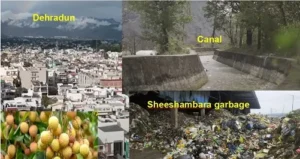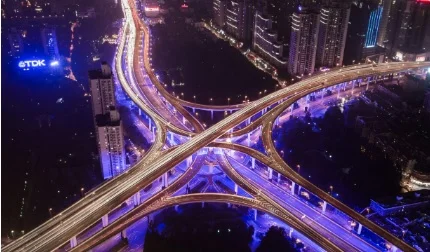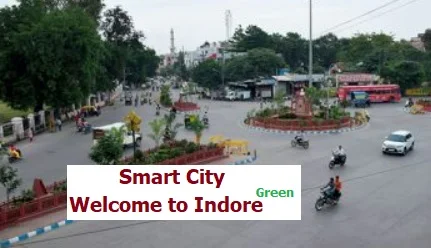Dehradun, nestled in the Doon Valley amidst the Shivalik and Himalayan ranges, has undergone a remarkable transformation over the past few decades. Historically renowned for its lush litchi orchards and basmati rice fields, the city was primarily an agrarian society. The fertile land and favorable climate made it an ideal location for cultivating these prized crops, which were not only central to the local economy but also a part of the region’s cultural identity.
The transition from an agricultural haven to a bustling urban center began in the latter half of the 20th century. Population growth played a significant role in this shift. As more people moved to Dehradun, attracted by its natural beauty and relatively peaceful environment, the demand for residential and commercial spaces surged. This influx of population culminated in the shift from purely agricultural activities to more diverse economic opportunities, including commerce, education, and services.
Economic opportunities also catalyzed Dehradun’s urban transformation. The establishment of various govt institutions, such as Forest Research Institute, Indian Military Academy, DRDO labs, ordinance factory, ONGC centre, Indian Institute of remote sensing, etc turned the city into an hub of govt professionals as well as that of trainees and research scholars. Many people retired from these institutes preferred to settle in Dehradun to make it a tranquil valley for retirees. This transition had occurred even before the creation of hill state of Uttarakhand. The pace of transition increased after the mushrooming of various engineering and medical colleges and deemed universities like Graphic Era, University of Petroleum studies, DIT, Sri Guru Ram Rai University, etc. This attracted students and professional teachers from across the country, further boosting the local economy and necessitating urban infrastructure development.
Administrative decisions significantly influenced Dehradun’s metamorphosis. The declaration of Dehradun as the provisional capital of Uttarakhand in 2000 marked a pivotal moment in its urban development. This official status spurred a wave of infrastructure projects, including the expansion of roads, establishment of new residential colonies, and the introduction of public services. The increased administrative focus on Dehradun also attracted investments, further accelerating its urban growth.
Statistics highlight the extent of Dehradun’s transformation. According to the Census of India, the population of Dehradun grew from about 270,000 in 1981 to over 500,000 by 2011. It got almost double as per the census in 2021 to 943000. More than a million people live in Dehradun now. The landscape, once dominated by expansive orchards and rice fields, is now characterized by a mix of residential buildings, commercial complexes, and educational institutions. The lifestyle of its residents has evolved accordingly, blending traditional agricultural practices with modern urban living.
In essence, Dehradun’s journey from a litchi orchard-rich valley to a vibrant urban hub is a testament to its adaptability and growth. The city’s ability to balance its rich agricultural heritage with the demands of modern urbanization continues to define its unique character. However, it’s not an easy task to cater to the demand of more than million people in sustainable manner. Moreover, there is constant influx of thousands from the hills and surrounding areas into the city on daily basis for various purposes like medical emergency and political. This causes frequent traffic jam among other challenges of urban planning.
Smart City Mission: A New Vision for Urban Development
The ‘Smart City Mission,’ launched by the Government of India, represents a transformative approach to urban development aimed at fostering sustainable growth and enhancing the quality of life for residents. Dehradun’s inclusion in this ambitious initiative marked a significant milestone in its evolution. The city got money for a few projects. Unfortunately, Dehradun has been excluded from CITIIS 2.0 (city investments to innovate, integrate and sustain) challenge by Ministry of housing and urban affairs of central govt of India.
One of the primary objectives of the Smart City Mission is to improve urban infrastructure. This encompasses a wide array of projects aimed at upgrading the city’s physical and social framework. In Dehradun, efforts are underway to modernize the public transportation system, making it more efficient and accessible. For instance, the introduction of smart buses equipped with GPS tracking and real-time passenger information systems is expected to reduce commute times and improve the overall travel experience. How much impact it has made on the ground is still to be assessed quantitatively.
Promoting sustainable development is another cornerstone of the Smart City Mission. Dehradun is focusing on creating eco-friendly urban spaces that not only conserve the environment but also enhance the quality of life for its residents. The development of children-friendly urban spaces, such as parks and playgrounds, is a testament to this commitment. These spaces are designed to be safe, inclusive, and conducive to physical and social activities, thereby promoting the well-being of younger residents. The civil work of widening the roads and removing unauthorized parking near schools and colleges has been done to some extent. All these projects have made impact, but is it sufficient enough? – the jury is still out.
Additionally, the integration of technology in city management is a critical aspect of the Smart City Mission. Dehradun is leveraging advanced technologies to enhance governance and service delivery. Examples include the implementation of smart lighting systems that reduce energy consumption and improve public safety, and the deployment of surveillance cameras and sensors to monitor traffic and environmental conditions. These technological advancements are expected to create a more responsive and efficient urban management system.
The expected outcomes of these projects are manifold. Improved infrastructure will likely boost economic activities, while sustainable development initiatives are set to enhance the city’s environmental footprint. Furthermore, the integration of technology in city management is anticipated to lead to more transparent and effective governance, ultimately fostering a higher quality of life for all residents of Dehradun.
Challenges in Modernization: Garbage Disposal and Cleanliness
Dehradun’s rapid transformation from a tranquil town known for its litchi orchards to a burgeoning smart city has brought with it significant challenges, particularly in the realm of garbage disposal and cleanliness. The city’s waste management infrastructure has struggled to keep pace with its swift urbanization, leading to persistent issues in maintaining cleanliness. Inadequate waste disposal systems and a lack of comprehensive recycling initiatives have exacerbated these problems, causing concern among both residents and local authorities.
One primary challenge is the insufficient infrastructure for effective garbage disposal. Dehradun’s current waste management facilities are overwhelmed by the increasing volume of waste generated by its growing population. The city lacks an adequate number of waste processing plants and sanitary landfills, which are essential for managing both organic and non-organic waste efficiently. Furthermore, the collection and transportation of waste are often hampered by logistical issues, resulting in irregular garbage collection and overflowing bins.
Public awareness and participation also play a crucial role in the city’s cleanliness. Many residents are either unaware of proper waste disposal practices or lack the motivation to adhere to them. This is compounded by a shortage of educational programs and community initiatives aimed at promoting sustainable waste management practices. Consequently, littering in public spaces and improper disposal of household waste remain prevalent issues.
Rapid urbanization has further complicated waste management efforts. The construction of new residential and commercial areas has outpaced the development of corresponding waste management infrastructure. This has led to unplanned and haphazard waste disposal practices, which pose environmental and health hazards. Additionally, the influx of people from rural areas to the city has increased the demand for efficient waste management services, which the current system is ill-equipped to provide.
Despite these challenges, there are ongoing efforts to address the waste management crisis in Dehradun. Local authorities, in collaboration with community leaders and environmental organizations, have initiated several programs aimed at improving the city’s cleanliness. These initiatives include the introduction of waste segregation at the source, the establishment of more waste processing facilities, and the promotion of recycling programs. Moreover, awareness campaigns and educational workshops are being conducted to encourage residents to adopt responsible waste disposal practices. While progress has been made, continued efforts are essential to ensure that Dehradun meets the growing demands of a modern, smart city.
Shishambara waste management plant is not very far from the city. In fact, it is only 10 minutes drive from Regional Science Centre, Dehradun, developed by the National Council for Science Museum (NCSM), Government of India. In a way, Shishambara village is outskirts of the expanding Dehradun, where population density and associated construction is on the rise. But, for its citizens, the place is like a hell of bad odour. Every day, more than 400 metric ton waste comes here. Asan river, flowing nearby, is also in danger of becoming a permanent drain of unprocessed garbage. The exclusion of Dehradun from CITIIS 2.0 under the Smart City mission has further dented the hope of people here. Now, to arrange the funds for efficient garbage disposal along with proper maintenance and functioning of Shishambara plant without the stink is a big challenge for Dehradun city administration.
Balancing Urbanization with Ecology: The Role of Green Spaces
As Dehradun evolves into a modern urban center, the challenge of balancing rapid urbanization with ecological preservation becomes increasingly significant. The city’s transformation from lush litchi orchards to a burgeoning smart city necessitates a strategic approach to maintain its environmental integrity. Central to this strategy are the expansive green spaces under the stewardship of governmental institutions such as the Forest Research Institute (FRI) and the Indian Military Academy (IMA).
The Forest Research Institute, with its sprawling campus and dense forest cover, plays a pivotal role in sustaining the region’s ecological balance. It serves not only as a hub for forestry education and research but also as a green lung for the city, mitigating pollution and providing a haven for various species of flora and fauna. Similarly, the Indian Military Academy, with its extensive grounds, contributes to the city’s green landscape, offering a sanctuary for biodiversity and a green buffer against urban sprawl.
These green spaces are essential in maintaining ecological balance, as they help regulate temperature, reduce air pollution, and manage stormwater runoff. Additionally, they provide recreational areas for residents, promoting physical activity and mental well-being. The presence of parks, gardens, and forested areas enhances the quality of life, offering a respite from the concrete jungle and fostering a connection with nature.
There is a strong need of collaborative efforts between governmental bodies, non-profit organizations, and the local community to raise awareness about the importance of green spaces. Educational campaigns, eco-friendly urban planning, and sustainable development practices should be promoted to strike a balance between urban growth and ecological preservation.
In essence, while Dehradun tries to develop as a smart city, the role of green spaces curated by institutions like the FRI and IMA cannot be understated. In the future, how effective these green spaces will be to balance the challenges of ever increasing traffic pollution and garbage of the million plus people is yet to be seen. And the march of the smart city needs to be guided by the sustainability challenge of efficient garbage disposal.




